3DPrint.com | The Voice of 3D Printing / Additive Manufacturing |
- New Hardware, Collaborations & More at RAPID+TCT 2022
- Covestro Joins Stratasys’s 3D Printing Materials Ecosystem with Rail-Ready Nylon
- AddUp and Uniformity Labs to Increase Productivity of 3D Printed Titanium
- Markforged and 3YOURMIND Join Forces for Fleet Management 3D Printing Software
- Prusa Research Buys Printed Solid
- 3D Printing News Briefs, May 18, 2022: Xerox, Full-Color Materials, & More
- GM Turns to HP’s MJF 3D Printing for Fast Part Production
| New Hardware, Collaborations & More at RAPID+TCT 2022 Posted: 18 May 2022 09:00 AM PDT This year, the RAPID + TCT conference kicked off Tuesday with new products, materials, and solutions, many of them on display at the event. 2022 is the 31st year for the annual event, produced by 3D technology event leaders SME and Rapid News Publications and touted worldwide as North America's largest and most influential AM event. This time around, RAPID + TCT is returning to its birthplace, Detroit, where the city is experiencing a resurgence filled with new developments, investments, and tech startups, and the highest concentration of engineering talent in the U.S. As visitors get acquainted with over 400 exhibitors and keynote presentations, we take a look at the round-up of some of the biggest news from several participating 3D printing companies. Digital Metal launches new 3D printer for industrializing binder jetSweden-based Digital Metal, a subsidiary of the Höganäs Group—the largest producer of metal powders globally—announced the launch of its new DMP/PRO binder jet system. Developed for high volume manufacturing of metal binder jet components for industry, luxury goods, medical manufacturing, and consumer products, the new system's printhead incorporates 70,400 print nozzles. This allows the system to produce up to 1,000 cubic centimeters of parts per hour at 1600 dots per inch (dpi). Digital Metal unveiled its new system at Rapid stand 2920 on Tuesday, 17, 2022. Borne from the thousands of parts made daily by Digital Metal's existing customers, the DMP/PRO has been shaped by these manufacturing realities and needs, says the company. The launch customer of the new Pro series is Ann Arbor, Michigan-based Azoth 3D, a manufacturer of high volume precision 3D printed parts for Fortune 500 Companies.
GE Additive and Orchid partner for large joint orthopedic implantsOrchid Orthopedic Solutions, a Michigan manufacturer of orthopedic implants and instruments, signed an agreement with GE Additive to continue driving the adoption of 3D printing by developing electron beam melting (EBM) solutions in the medical implants sector. As part of the deal, Orchid will make a significant investment to enable scalability and full production support for its customers by purchasing GE Additive EBM Spectra L systems, service agreements, powders by GE Additive company AP&C Powder Metallurgy, and GE's AddWorks consultancy services. Once installed and operational in 2022, Orchid’s fleet of machines will be ready for production in 2024 to meet customers' requirements and allow the manufacturing of large joint implants, such as complete knee components and acetabular cups, more competitively and without compromising quality. As devices increase in complexity, this new EBM additive manufacturing capability with scalable precision can offer cost-effective manufacturing to complement conventional methods. As an added bonus, GE Additive says it has experience overseeing the deployment of a large fleet of industrialized EBM machines, having done so for the precise scalable AM production at GE Aviation's Avio Aero business. Furthermore, GE Additive CEO Riccardo Procacci said this step forward proves that medical and orthopedic communities are leaning towards metal additive to innovate and drive better-personalized outcomes for patients. Sigma Labs to operate as Sigma Additive SolutionsAnother latest news sees Sigma Labs now operating as Sigma Additive Solutions and trading on the Nasdaq under the new ticker symbol "SASI," starting May 19, 2022. The AM software company, which has been in the industry for some time, says the change reflects its commitment to becoming a solutions provider focused on helping customers and OEM partner providers use a standard set of patented quality metrics across 3D printers from different manufacturers, using different processes, for both metal and polymer parts. This latest announcement follows a recent integration of Sigma and Materialise technology to introduce in-process quality control into metal PBF 3D printers, which has long been considered a common roadblock to metal 3D printing. The company's decision to operate as Sigma Additive Solutions acknowledges the progress the Sigma team has made in creating the quality standard in additive manufacturing, points out Jacob Brunsberg, President and CEO of Sigma.
Dyndrite Announces Deals with Azul3D, Impossible Objects, and MeteorThis week at Rapid, Dyndrite introduces attendees to several of its products, as company experts will be participating in speaker panels throughout the event. Additionally, the company has revealed new collaborations with three companies. Northwestern University spinout Azul 3D will use Dyndrite's application development kit with the High Area Rapid Printing (HARP) technology to power the LAKE printers. Dyndrite will create software apps "powered by Dyndrite" to help speed the front-end process, ultimately helping customers increase production capacity and ensure the repeatability required for manufacturing. Together Dyndrite and Meteor Inkjet–a leading UK supplier of electronics, software, tools, and services for industrial inkjet–expanded their collaboration with the announcement of Meteoryte. This 3D software tool simplifies the development and adoption of inkjet technology for additive manufacturing applications.
Finally, Impossible Objects, an Illinois-based startup that commercializes a composite-based additive manufacturing (CBAM) process, selected Dyndrite software for its AM technology after a highly successful proof of concept. The post New Hardware, Collaborations & More at RAPID+TCT 2022 appeared first on 3DPrint.com | The Voice of 3D Printing / Additive Manufacturing. |
| Covestro Joins Stratasys’s 3D Printing Materials Ecosystem with Rail-Ready Nylon Posted: 18 May 2022 07:00 AM PDT Stratasys was always a closed shop when it came to materials. This limited material library limited applications, use cases, and use. However, a few years ago the company opened itself up through an Ecosystem approach, whereby approved vendors could add themselves to Stratasys´ line up of materials. Solvay was the first in 2019. Kimya was recently added. Now, Bayer spinout Covestro is in the mix.
The company, which bought DSM’s additive business, has qualified Addigy PA6/66-GF20 FR LS filament for use with Stratasys machines to begin with. The material complies with EN 45545-2, NFPA 130 (ASTM E162, ASTM E662), SMP 800-C and FAR 25.853 for low smoke, flame and toxicity. ¨As 3D printing moves to the factory floor, manufacturing customers need access to functional materials that bring the right properties to their applications and meet specifications. Open ecosystems bring material and printer companies together to optimize the printing process and bring manufacturers ease of mind as they accelerate the use of additive manufacturing in their production. They also provide dual materials sourcing for mitigating risk,” the company noted. That last point is a salient one. Few companies would take a chance on a manufacturing line or product that is completely dependent on one vendor. Many firms have rules in place to make sure that there is supply chain redundancy of some kind. As a matter of pricing and lock-in, many businesses would be fearful of ceding so much control to a single supplier.
The supplied pictures were of an “armrest for rail vehicle seats.” The company mentioned the rail industry by name, as well. The rail focus was something that Clariant’s 3D printing arm maintained before it was acquired by DSM. It’s a really interesting niche. Not a lot of people have paid it a lot of attention, but refurbishment in rail is a huge industry in and of itself and 3D printing could play a role making a lot of out-of-production parts, as well as custom and low-volume components. However, Stratasys machines are now increasingly used by Siemens to create replacement parts for trains and trams. By having a good application fit, many more materials will really make the difference for 3D printing. With more feedstocks fit-for-purpose and meeting all user requirements, more customers can be empowered to really apply the right materials for the job properly. With the right certificates in hand combined with familiar materials, a business’s internal 3D printing champions can much more easily find the right ammunition to convince others of the potential success of an additive project. This is no small matter, often companies fear the exotic and new. There are a lot of areas where trying new things is just about the only thing that could get you fired. To really help the ones championing our technology, therefore, is to generate our own new leads, applications, and success in the future. And this rail-ready material is a case in point that validates Stratasys’ new open approach. In the old lineup, it would have been unlikely that the company would have taken the time to validate a PA 6 material for its portfolio. That would have already seemed very exotic for Stratasys. However, now it has a material that could be used for rail and other similar applications to boot. I really think that Stratasys is on to something with its material alliance approach and think that it will help the company penetrate many more markets in the future. The post Covestro Joins Stratasys’s 3D Printing Materials Ecosystem with Rail-Ready Nylon appeared first on 3DPrint.com | The Voice of 3D Printing / Additive Manufacturing. |
| AddUp and Uniformity Labs to Increase Productivity of 3D Printed Titanium Posted: 18 May 2022 06:30 AM PDT Industrial metal additive manufacturing OEM AddUp Solutions, which was established as a joint venture by French companies Michelin and Fives, announced that it’s collaborating with engineered materials producer Uniformity Labs to increase the productivity of titanium alloys using laser powder bed fusion (LPBF) technology. Specifically, the two companies are using the AddUp FormUp 350 3D printer, which was launched last year, and Uniformity’s Ti64 Grade 23 titanium alloy. The immediate goal is to market Uniformity’s Ti64 Grade 23 alloy together to both AddUp and Uniformity’s customer bases as an advanced material option for the FormUp 350 LPBF system. Then hopefully, a partnership will grow that uses metal AM processes, like LPBF, to target regulated aerospace and healthcare production…both major sectors in the AM industry.
The modular FormUp 350 is an open LPBF platform that offers both user safety and high productivity in a scalable package. As LaSelle mentioned, the system features a “unique” roller technology, which is said to enable a 20% higher density in the print bed for better surface finish, fine feature resolution, and the ability to achieve extreme unsupported overhangs. The FormUp 350 also has a bidirectional coating system with what AddUp says is 40% faster powder spreading, more than 160 accessible parameters, up to four 500W lasers, user-friendly interface, and machine feeding. In addition, an autonomous powder module, powder storage, and unfused powder recovering and sieving keeps human operators safe. Combine all of these features with a complete monitoring solution to ensure quality assurance post-print, and customers can enjoy a real Industry 4.0 solution. On the other side of this collaboration, Uniformity Labs uses its high-density metal powders and print processing knowledge to help customers make improvements to manufacturing at scale. The company’s patented materials technology enables more throughput, residual stress reductions, and powders with densities up to 85% that are more supposedly flowable than other powders of similar size. Uniformity already has an ongoing partnership with Desktop Metal to develop metal powders for binder jetting, and reports that for powder bed technology, like AddUp offers, it can achieve more reliable printing due to less warpage, and save time due to reduced use of support structures. The company’s Ti64 alloy, which was developed in-house by expert AM innovators and materials scientists, displays what it calls “best-in-class” mechanical performance, in addition to a vastly improved throughput, surface roughness, and, as Uniformity reports, the ability to increase part production by up to 100% or more in comparison to 3D printing other Ti64 alloys with similar mechanical properties.
Both companies will be attending RAPID + TCT 2022 in Detroit this week, with Uniformity Labs at Booth #1942 and AddUp at Booth #2625. Keep an eye out for the 3DPrint.com team on the show floor as well! The post AddUp and Uniformity Labs to Increase Productivity of 3D Printed Titanium appeared first on 3DPrint.com | The Voice of 3D Printing / Additive Manufacturing. |
| Markforged and 3YOURMIND Join Forces for Fleet Management 3D Printing Software Posted: 18 May 2022 06:00 AM PDT Looking back at 2022, will we see this as the year of manufacturing execution software (MES) in 3D printing? Possibly. There have been a number of developments related to the technology that suggests that MES is key to the industrialization of additive manufacturing (AM). The latest is the combination of 3YOURMIND's Agile MES platform and other lifecycle management tools with software from Markforged (NYSE: MKFG). Markforged has always presented itself as a software-forward company. Though it pioneered composite 3D printing and bound metal extrusion, it has long promoted its cloud-based Eiger software as the leading edge in 3D printer management. This resulted in the creation of a massive network of Markforged 3D printers, meant to improve the 3D printing experience through the application of machine learning to the entire network. In turn, Eiger manages this Digital Forge and provides automated workflows and real-time analytics. 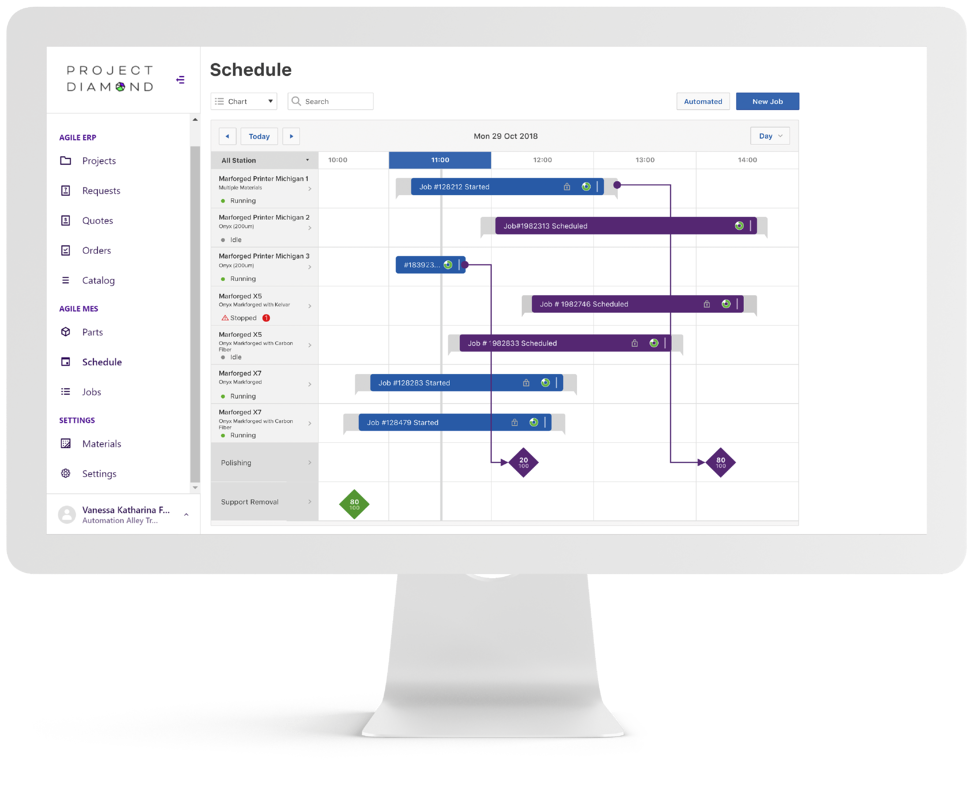 3YOURMIND Agile MES platform for project DIAMOnD by Automation Alley. Image courtesy of 3YOURMIND. So far, however, Markforged software has been limited to Markforged equipment. 3YOURMIND adds to Markforged's solution by allowing a multi-vendor fleet of printers to connect. That way, there's a single interface for monitoring all of a shop's equipment. Additionally, they will be able to leverage Markforged's Blacksmith software, one of the few in-process part inspection tools on the market that automatically adds a printer parts quality assurance report to its digital record.
One possible use of Markforged's Eiger Fleet, for managing a collection of 3D printers, is the automatic printing of parts as they reach the end of life. This digital kanban inventory system seems to be the result of the company's partnership with German inventory management company Würth, which offers its CPS KANBAN service brand.
We could see the results of such a collaboration in the Project DIAMonD initiative in Michigan, where Markforged printers are being used by local manufacturers. Tom Kelly, Executive Director and CEO of Automation Alley, explained:
Those attending the RAPID + TCT show in Detroit will be able to learn more about the integration, while also seeing the new FX20 3D printer and new Eiger features. Markforged will be at booth #3808 and 3YOURMIND will be at booth #3622. The post Markforged and 3YOURMIND Join Forces for Fleet Management 3D Printing Software appeared first on 3DPrint.com | The Voice of 3D Printing / Additive Manufacturing. |
| Prusa Research Buys Printed Solid Posted: 18 May 2022 05:30 AM PDT Prusa Research has just closed the acquisition of its sole US reseller, Printed Solid. For the past eight years, Printed Solid was a distributor of Prusa’s printers. The company’s focus was on US based corporate customers and education. The deal is meant to improve customer service for the US market for the Prague-based maker of open-source 3D printers. The deal will also let Prusa extend its warranty to its US sold printers and let them sell their excellent, Prusament filament in the US directly. Prusa recently disclosed that Prusa Research has sold over 400,000 systems worldwide to date. The company is still privately held. Josef Prusa said that,
Our Editor Michael Molitch-Hou was at the RAPID+TCT event in Detroit, Michigan and spoke to David Randolph, who said,
This move follows the firm’s recent acquisition of Trilab, a more expensive delta printer company. What’s more unexpected is that Printed Solid will continue to resell printers and filaments by other suppliers. I really like Prusa Research as the company makes excellent desktop 3D printers. The design and build quality of the systems is very good, the components are top-notch, and they have the best QA in the business. As a result, the Prusa desktop systems represent great value. I also really love Prusa’s work on print farms and its offering now of complete print farm solutions. In fact, the firm uses its own print farm to produce a lot of its own parts, demonstrating the efficacy of its systems in manufacturing. 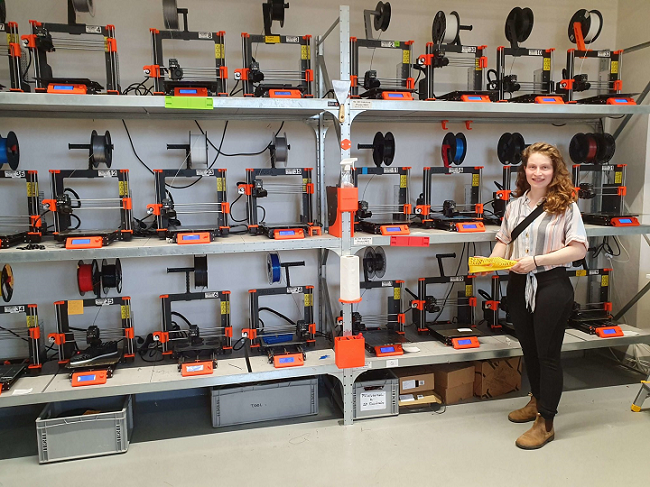 3D designer Ganit Goldstein at PrusaLab. Image courtesy of PrusaLab. I really believe that we´re seeing a development where large industrial systems such as Fortus are being used in regulated markets. Highly productive high temperature or high throughput larger systems will also be in demand for high flow manufacturing. Then there will be shared printers for around $20,000 used by departments. These will have a lot of monitoring and advanced features. Office printers for $10,000 used by corporates will be cheaper versions of those. Also, Pro printers for around $5,000 are to be used by engineers and will be more compact. Then desktop systems for around $2,500 for reliable printing, a segment around $1500 for fully-featured desktop printers, and a segment around $500 for low-cost machines. With this kind of a breakdown, I think you could serve a lot of the world’s customers well. In that breakdown, there is room for printers that will be used for high-volume manufacturing. There will also be room for the Apple Classic printer or the definitive printer for use in indication. Prusa’s incredible opportunity is to be able to sell its Prusa XL printer, perhaps as a desktop printer for some engineers, to high volume maker customers as well as universities and also print farms for manufacturing. This trick will give them a scale that others can not possibly ever match. If they do this, they’ll be unbeatable. We’ve seen with Prusa’s release of filament that the company is capable of launching excellent extension products, and perhaps they will continue to grow globally in the same vein. It seems ludicrous to most that desktop Prusa Research will challenge Stratasys or even a mid-market brand like Ultimaker. But, that’s not the point; the company can do well building its own market and making its own Professional offering work well for some people on top of its very successful MK3 desktop printers. It will be interesting to see the company´s journey. The post Prusa Research Buys Printed Solid appeared first on 3DPrint.com | The Voice of 3D Printing / Additive Manufacturing. |
| 3D Printing News Briefs, May 18, 2022: Xerox, Full-Color Materials, & More Posted: 18 May 2022 05:00 AM PDT In 3D Printing News Briefs today, we’re starting off with metal, as RIT and Xerox are partnering to advance metal AM with a new system installation. Moving on, Stratasys has introduced some colorful new materials for lifelike applications. Next, researchers from Germany have added anti-reflection coatings to 3D printed micro-optical systems, and a research team out of Brazil built a modified 3D printer to develop a millreactor for producing ethanol. Finally, 3D printed mockups offer a comparison between the iPhone 13 and 14. RIT Installs Xerox ElemX 3D Printer to Advance Metal AMXerox (NYSE: XRX) Elem Additive Solutions announced a partnership with the Rochester Institute of Technology (RIT), which has purchased and installed one of its ElemX metal 3D printers at the RIT AMPrint Center. This installation will help facilitate advanced material research, specifically focused on aerospace applications, as RIT collaborates with manufacturers’ research and product development in next-generation metal AM. RIT is an early adopter of liquid metal AM, which the ElemX offers, and will continue working with Xerox, one of its longtime collaborators, to scale the ElemX system for new industrial and commercial applications.
Stratasys Introduces Color Resins for Hyper-Realistic 3D PrintsRecently, Stratasys introduced three new color resins for its J7 and J7 PolyJet 3D printer series, which are said to achieve soft-touch, full-color prints with an unprecedented level of realism. The new Agilus30 color resins, in Cyan, Magenta, and Yellow, are immediately available to use with the high-speed, multimaterial J7 and J8 printers. This will enable designers to create and print full-color prototypes that meet their specific business needs and have the look and feel of the final product, which isn’t always the easiest feat to achieve.
Anti-reflection Coating Added to 3D Printed Micro-Optical Systems Researchers developed a new way to apply anti-reflective coatings to 3D printed multi-lens systems, such as the doublet objective pictured here, which is just 600 microns in diameter. These coatings help minimize light losses due to reflection, which is critical for making high-quality 3D printed systems with multiple microlenses. Image courtesy of Simon Ristok, University of Stuttgart Researchers developed a new way to apply anti-reflective coatings to 3D printed multi-lens systems, such as the doublet objective pictured here, which is just 600 microns in diameter. These coatings help minimize light losses due to reflection, which is critical for making high-quality 3D printed systems with multiple microlenses. Image courtesy of Simon Ristok, University of StuttgartA research team from the University of Stuttgart published a paper detailing their new low-temperature thermal atomic layer deposition (ALD) method for applying anti-reflective (AR) coatings to small, complex 3D printed polymer multi-lens systems. Coatings help reduce light loss due to reflection, and large camera lenses are coated pre-assembly. But, for small lenses 3D printed in a single step, traditional coating methods won’t work. ALD was previously used to apply AR coatings, but the process typically means high temperatures that would melt the materials used to print complex micro-optical systems. So the team developed a new process that works at a lower 150°C and exposes the 3D printed lens system to a gas containing the molecular building blocks of the AR coating. The gas molecules can then move freely into all structure parts to form a thin, homogenous layer on all exposed surfaces. The team successfully tested the process on a double-lens system printed on a Nanoscribe Quantum X.
3D Printed Millireactor for Alcoholic Fermentation ProcessResearchers from the University of Campinas (Unicamp) in Brazil published a paper on the modified 3D bioprinter they developed to print a millireactor with yeast-filled channels immobilized in alginate hydrogel for fermenting alcohol in a single stage. The autonomous robotic system features two independent extruders, a conventional head with an FFF mechanism and a module with a syringe for injecting solutions and hydrogels with a catalyst to produce ethanol, a clean, renewable energy source. As co-author and research associate Harrson S. Santana wrote in an email, this enables the faster, safer, more efficient manufacturing of catalytic microdevices.
3D Printed iPhone 13 vs. 14 MockupsFinally, if you’re an iPhone user like me, you’re likely curious about the design changes coming for this year’s iPhone 14 lineup of four models, and now you can! In a blog post, you can see images of 3D printed iPhone 14 mockups, likely based on somewhat accurate dimensions for the new phone. However, these mockups do not include the layout of the front camera and the iPhone 14 Pro sensors, so we can’t confirm what the front looks like. One big design change you may have heard about is the larger camera system on the back. In one image, you can see the 6.7″ iPhone 14 Max mockup fitting almost perfectly inside a case for the iPhone 13 Pro Max, which means they’re probably the same size, and the camera bump may be much smaller on the new phone. However, the 6.1″ iPhone 14 and 14 Pro mockups don’t fit into the corresponding cases for the 13 models, meaning that the camera bump is larger. The 3D printed mockups also suggest that some of the 14 models may have thinner display bezels, with different corner radii, based on the fit of screen protectors. The post 3D Printing News Briefs, May 18, 2022: Xerox, Full-Color Materials, & More appeared first on 3DPrint.com | The Voice of 3D Printing / Additive Manufacturing. |
| GM Turns to HP’s MJF 3D Printing for Fast Part Production Posted: 18 May 2022 04:30 AM PDT At this week's RAPID+TCT event, HP will be running its high volume production Jet Fusion 5200 platform, powered by Multi Jet Fusion (MJF) technology which has now printed more than 100 million parts. During the event, HP revealed that this 3D printing system, introduced in 2019, has received new enhancements to its performance capabilities, stating it now provides superior repeatability, reliability, and part quality, along with new features that enable better control job-to-job and printer-to-printer.
Companies in a wide range of industries use this technology to scale production and deliver customized products to market quickly and more efficiently. One industry, in particular, has seen plenty of advantages through HP's MJF, automotive. HP says automakers in Detroit have been leading the industry's charge of advancement to realize the benefits of 3D printing, and the company is working with dozens of automakers, suppliers, and production partners to design and develop sustainable parts from prototyping to serial production. Along with pioneering Detroit automaker General Motors (GM), it has produced a variety of MJF final parts, including heating, ventilation, and air conditioning (HVAC) ducts for its Cadillac V-Series, cooling ducts for the Corvette C8, and other components used for design iteration, prototyping, and service. Most recently, GM has produced a variety of final parts using MJF, including a recent example of an innovative approach to creating a spoiler closeout seal added to the rear portion of several of the company's most popular full-size SUVs. In addition, working with HP and GKN Forecast 3D, GM was able to speed up the drying time, which accelerated the production schedule of full-sized SUVs, successfully creating and polishing the required 60,000 parts over the span of five weeks for use on approximately 30,000 vehicles. GM's additive manufacturing engineers Adam Campbell and Christine Bardsley explained that in 2021, GM was preparing its manufacturing network for the production launch of the model year 2022 full-size SUV passenger vehicles when an engineering decision was made to implement a design change very late in the development process. The change required an additional part to be introduced, something that is very rare so late in the game. Instead of using traditional manufacturing channels (which would have delayed customer deliveries), GM decided to ask the AM experts at its Additive Industrialization Center (AIC), a 15,000 square foot facility inaugurated in 2020, dedicated to transforming GM operations through 3D printing. GM's additive manufacturing team recommended using HP's MJF technology, which uses applied ink to promote energy absorption from a fusing lamp. As a result, the team produced a 3D printed spoiler closeout seal comparable to its injection-molded counterpart, both aesthetically and functionally, highlighting the engineers. Once the concept part was created, the team validated its functionality and design through wind tunnel testing to ensure the part met the required aerodynamic specifications. Then the pieces would have to go through a standard finishing process. Here, engineers turned to the 3D printing service bureau GKN Forecast 3D to ramp up the production of the approved spoiler closeout seal. Within a few days, GKN Forecast 3D tested, validated, and implemented a new drying process that reduced 60% of the time it would have taken GM to surface finish the parts. With all the processes in place, the teams accelerated the production schedule and successfully created and polished the required 60,000 parts in five weeks.  3D printed rear spoiler closeout seal for General Motors, before (left) and after (right) undergoing the finishing process. Image courtesy of GKN Forecast 3D. This challenging situation saved GM time and money that would have otherwise delayed the production line for its SUVs. Following the success of the part development process, which was done in just three weeks, it is imaginable that moving forward; the company will once again turn to HPs MJF technology to accelerate product development cycles and innovate in part production. Campbell and Bardsley will discuss this case with a live audience at the Rapid+TCT panel "How Additive Manufacturing Enabled GM to Navigate Production Challenges for Certain Model Year 2022 Full-Size SUVs." The discussion, which will take place on May 18 at 2 PM Eastern Time, will also center around the capabilities of AM as well as the tangible real-world benefits and scale at which the technology can be implemented to solve challenges, create greater efficiency and provide overall value to a company. The post GM Turns to HP's MJF 3D Printing for Fast Part Production appeared first on 3DPrint.com | The Voice of 3D Printing / Additive Manufacturing. |
| You are subscribed to email updates from 3DPrint.com | The Voice of 3D Printing / Additive Manufacturing. To stop receiving these emails, you may unsubscribe now. | Email delivery powered by Google |
| Google, 1600 Amphitheatre Parkway, Mountain View, CA 94043, United States | |

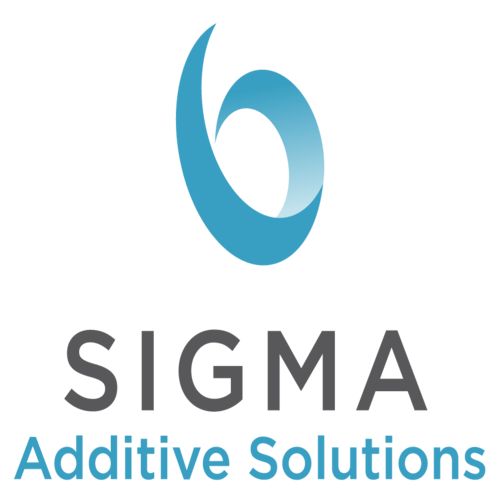
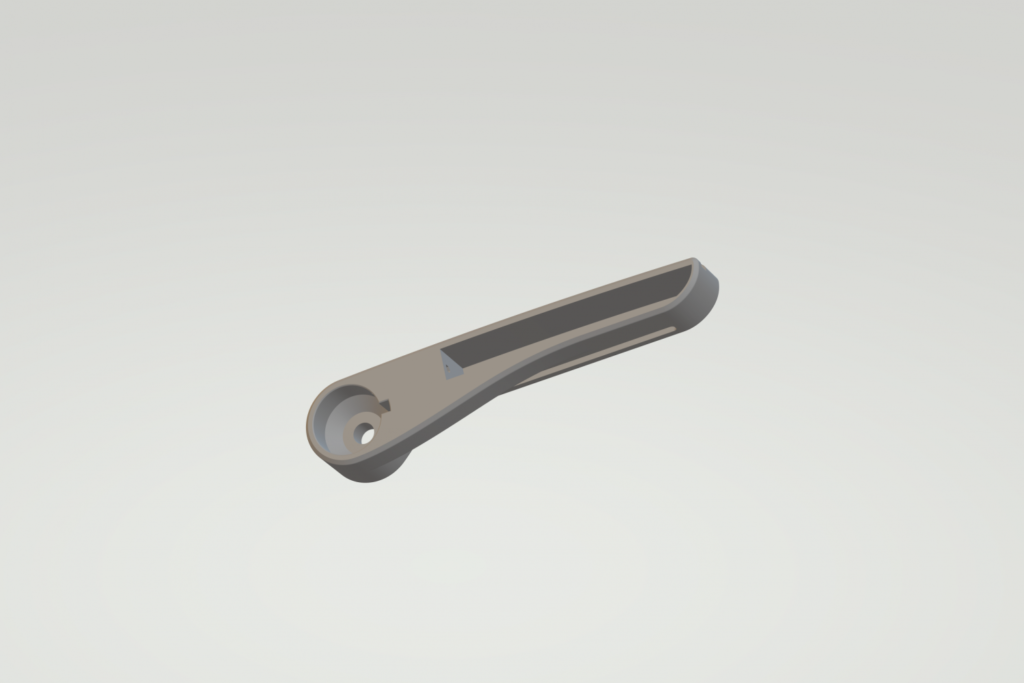

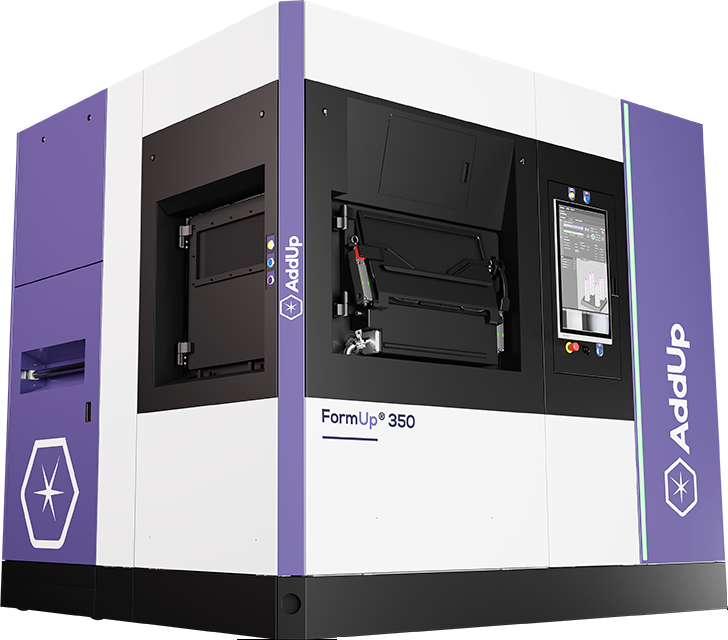
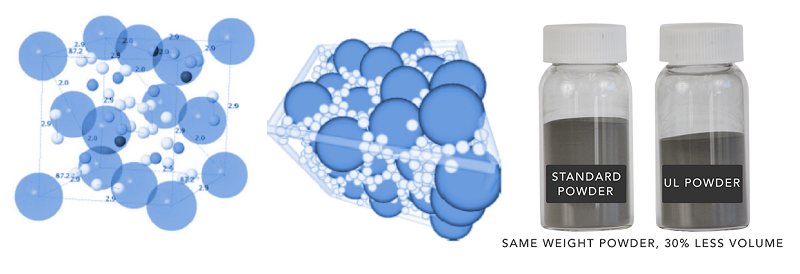
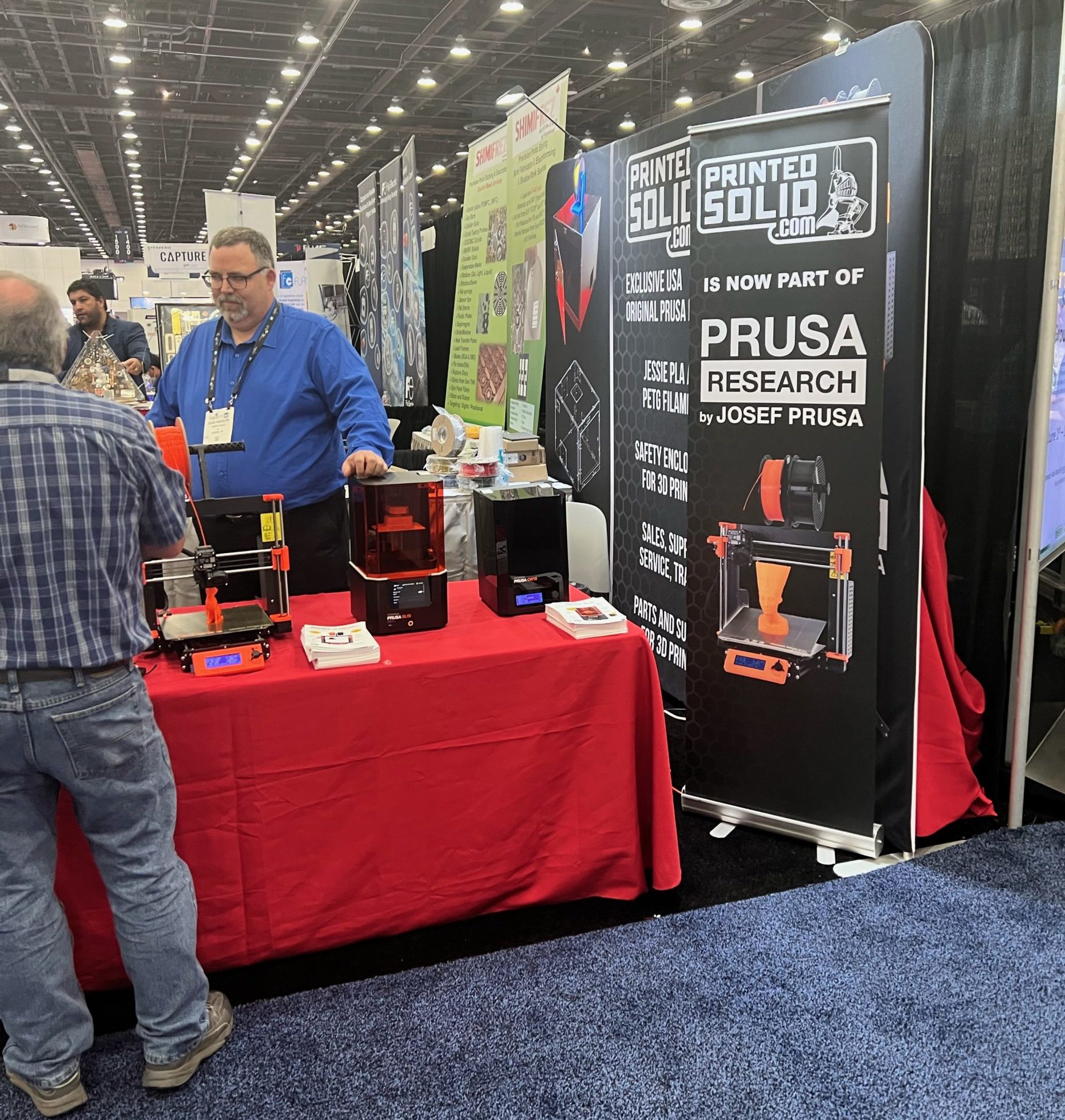

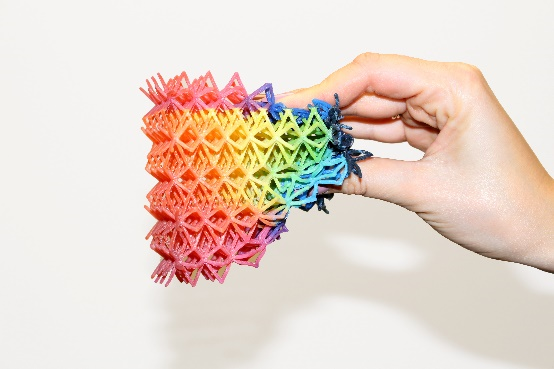
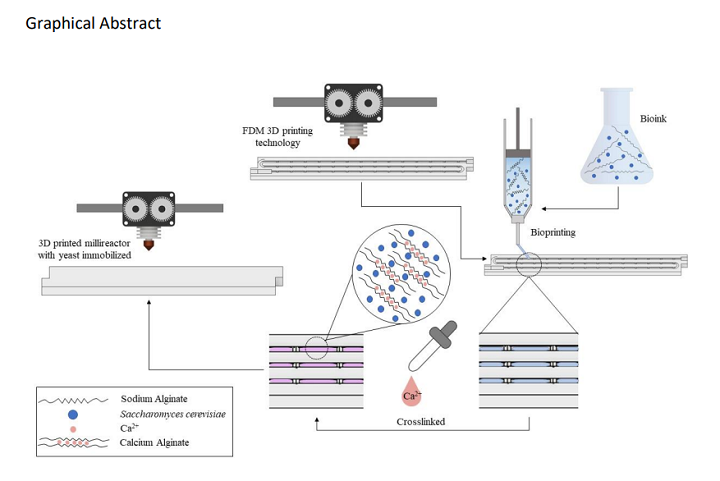
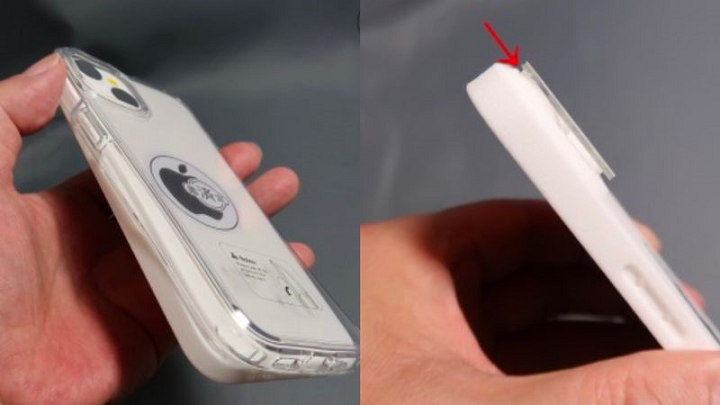

0 comments:
Post a Comment